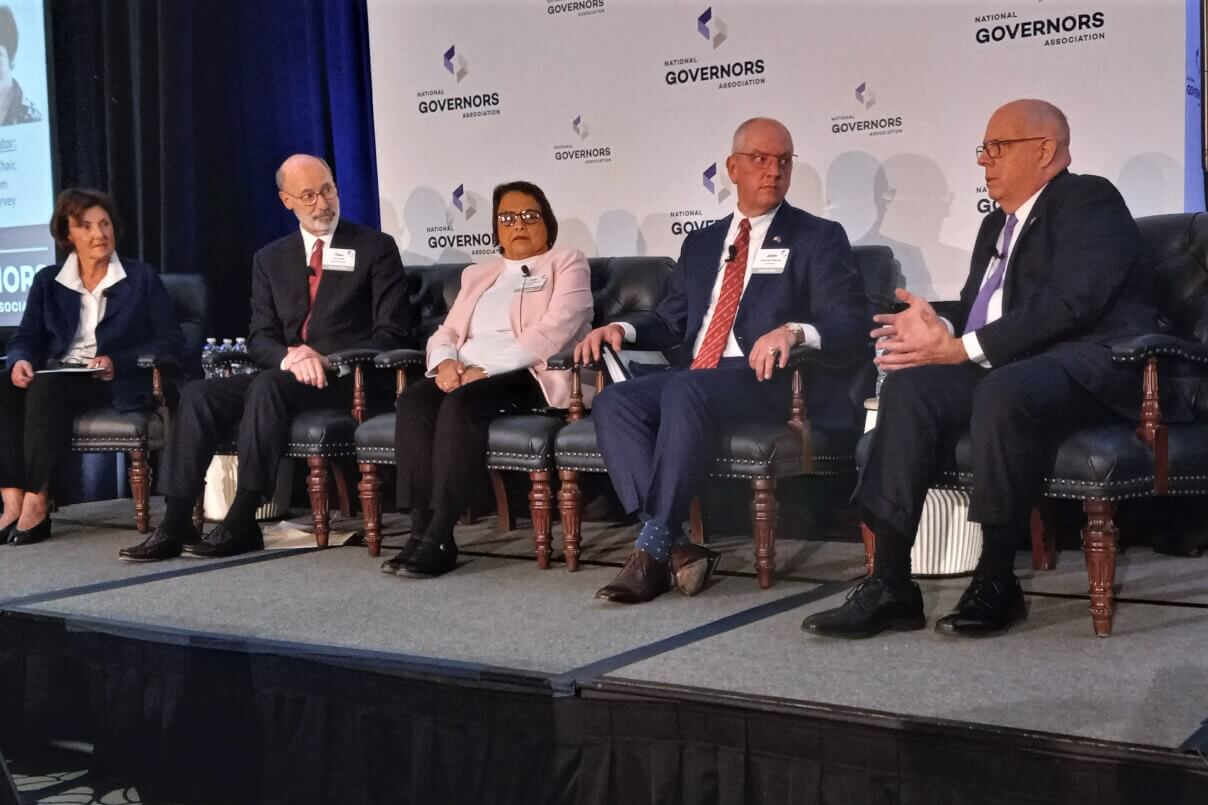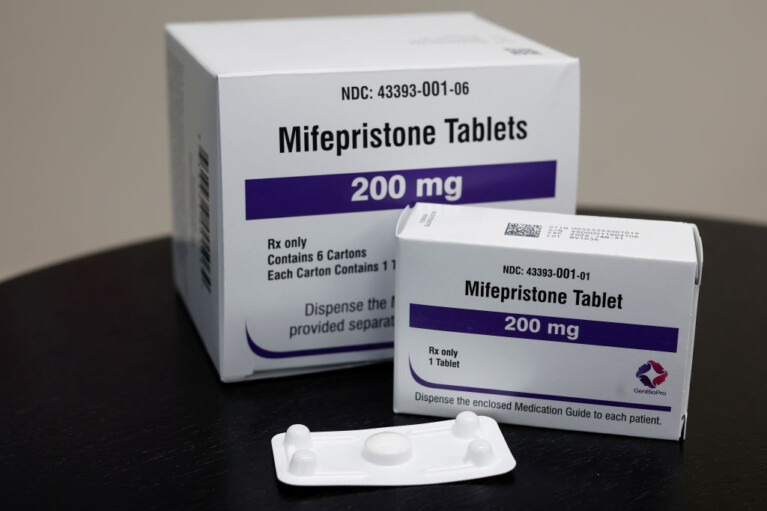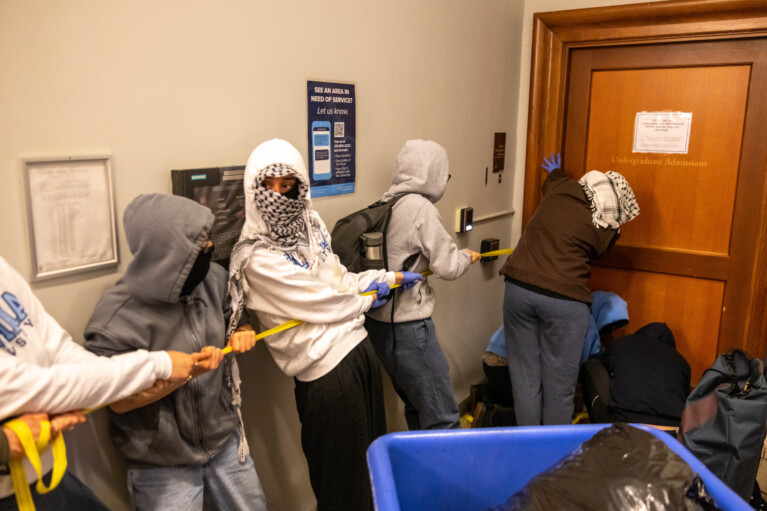Fellow Governors Praise Hogan for Federal Infrastructure Law

For weeks, Gov. Lawrence J. Hogan Jr. (R) has sought to claim credit for the bipartisan federal infrastructure package that President Biden recently signed into law.
On Tuesday, some of his fellow governors — all Democrats — vouched for him.
The National Governors Association, which Hogan led from the summer of 2019 to the summer of 2020, kicked off a three-day infrastructure summit in Annapolis on Tuesday. The conference is bringing together a handful of governors, multiple state transportation officials and other agency heads, government contractors, and business leaders, to discuss how the federal spending plan, which will provide billions of dollars to every state for infrastructure projects, will be doled out and implemented.
On Tuesday afternoon, a panel of four governors, including Hogan, praised the federal funding package and talked about what it would bring their states.
“It’s going to be a game-changer,” Hogan said.
The governors also heaped praise on Hogan.
During his term as NGA chair, Hogan made infrastructure his signature issue, convening meetings around the country to discuss the way forward when Congress and the Trump administration were unable to come to any kind of agreement. Earlier this year, with Biden in the White House, Hogan organized a bipartisan meeting of about two dozen governors and members of Congress in Annapolis to discuss infrastructure funding.
On Tuesday, Hogan’s fellow governors said he deserved credit for promoting the idea that a bipartisan bill was attainable and also for some of the elements that are in it.
“You really made it happen,” Louisiana Gov. John Bel Edwards (D) told Hogan.
Pennsylvania Gov. Tom Wolf (D) was equally effusive.
“You have been a leader in infrastructure,” he said. “It made a big difference.”
The governors said that as state and federal leaders were discussing how to expand the scope of the bill beyond traditional infrastructure like roads and bridges, Hogan suggested making cybersecurity part of the package. Hogan noted that while neither the House Republican proposal on infrastructure nor the Biden White House proposal contained cybersecurity initially, it seemed important to him.
“We’re the cyber capital in the U.S. here,” he said.
The discussion about cybersecurity epitomized the intense negotiations over the legislative package, Hogan said. Republicans initially didn’t want green energy and resiliency funding in the bill, while Democrats at first insisted on certain social spending programs. Both parties had to compromise.
“We had to drag both sides to the middle,” he said.
The governors agreed that the federal bill would fund vital projects in their states — from restoring vanishing coastline in Louisiana to improvements to Pennsylvania interstates to completing full resurfacing of all Maryland highways. State leaders said they were curious to see how the federal funding would be distributed and what restrictions, if any, would be placed on how state and local governments spend it.
Serving as moderator for the conversation, Jane Garvey, the former Federal Aviation Administration leader who is now North America chair of Meridiam, a global investment and infrastructure company, said the good news for state and local leaders is that the U.S. Department of Transportation and Department of Energy are issuing guidelines for infrastructure spending, rather than regulations. This will provide state and local governments with maximum flexibility, she said, and “allows us to move forward on a generational basis.”
Hogan advocated for more private sector investment in public works projects, noting that Maryland is using private funds to bolster operations at the Port of Baltimore, along with public-private partnerships to fund the Purple Line transit project and the proposed rebuild of the American Legion Bridge.
The governors said they would like to see more bipartisan cooperation in Congress, but expressed their doubts. Edwards, a former state House member, noted that state legislators and members of Congress, in contrast to governors, have little incentive to get things done.
“When you’re one of 105 state House members, as I was, or one of 39 state senators, or one of 435 members of Congress, you’re not personally responsible for the success or failure of everything,” he said.
Hogan said that while there inevitably are policy disagreements among governors, the work of the National Governors Association helps unify them, and that governors are generally inclined to help one another. He recalled going to “baby governor school,” sponsored by the NGA, soon after he was elected, and meeting with more reasoned chief executives.
“I didn’t know who were Democrats or who were Republicans,” Hogan said. “They weren’t wearing blue jerseys or red jerseys. They were all helpful and offering ideas.”




 Creative Commons Attribution
Creative Commons Attribution